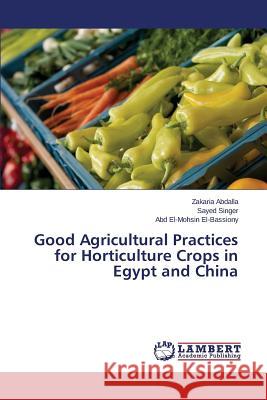Good Agricultural Practices for Horticulture Crops in Egypt and China » książka
Good Agricultural Practices for Horticulture Crops in Egypt and China
ISBN-13: 9783659551734 / Angielski / Miękka / 2015 / 168 str.
The concept of Good Agricultural Practices (GAP) has evolved in recent years in the context of a rapidly changing and globalizing food economy and as a result of the concerns and commitments of a wide range of stakeholders regarding food production and security, food safety and quality, and the environmental sustainability of agriculture. These stakeholders represent actors from the supply dimension (farmers, farmers' organizations, workers), the demand dimension (retailers, processors and consumers) and those institutions and services (education, research, extension, input supply) that support and connect demand and supply and who seek to meet specific objectives of food security, food quality, production efficiency, livelihoods and environmental conservation in both the medium and long term.
The concept of Good Agricultural Practices (GAP) has evolved in recent years in the context of a rapidly changing and globalizing food economy and as a result of the concerns and commitments of a wide range of stakeholders regarding food production and security, food safety and quality, and the environmental sustainability of agriculture. These stakeholders represent actors from the supply dimension (farmers, farmers organizations, workers), the demand dimension (retailers, processors and consumers) and those institutions and services (education, research, extension, input supply) that support and connect demand and supply and who seek to meet specific objectives of food security, food quality, production efficiency, livelihoods and environmental conservation in both the medium and long term.











